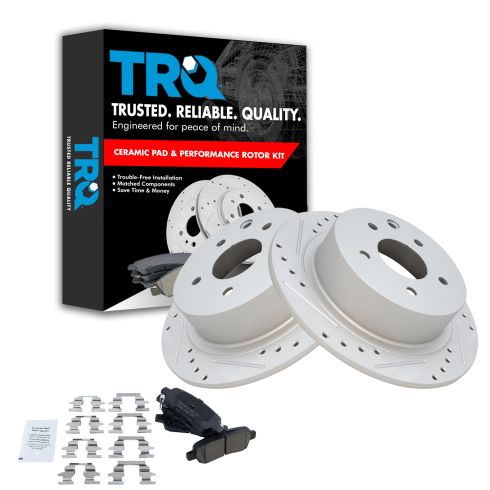1APBS00084-Nissan Altima Juke Maxima Sentra Rear Ceramic Performance Brake Pad & Rotor Kit TRQ Performance BKA12107

Replaces
2012 Nissan Juke Rear Ceramic Performance Brake Pad & Rotor Kit TRQ Performance BKA12107

Product Reviews
Loading reviews
4.62/ 5.0
16
16 reviews
Great Product for the Price
January 3, 2018
These rotors look amazing, great quality, no issues with shipping, packaging is excellent.
Fast service
September 21, 2018
The service was very good, the delivery was incredibly fast. I will be ordering more parts for my Chevy Colorado.
Wow! Could not be more pleased
April 18, 2019
I shopped with a competitor for years and decided to give 1A a shot when I needed a rear brake kit for my Nissan. Quick shipping. Best price for the product. My mechanic was even impressed my the quality for what I paid when he installed the parts. Shopping here moving forward.
Everything fit perfectly
April 20, 2019
Very happy with the service and the product. Product came in under a week, purchased another set for my parents car as well. 1A ???????? is awesome.
My first purchase
April 23, 2019
I ordered brakes and pads for my 2013 Altima. The delivery was exactly as expected and the parts worked exactly right for my car. I plan on making more purchases with 1A Auto.
Disc brakes
April 24, 2019
Rotors and pads combo where perfect fit.
Brake parts
June 17, 2019
The parts were correct and fit well. The shipping was on time which is good to get the notices when it's coming so you can plan.
Good buy
July 4, 2019
Product came In fast and was exactly what I needed.
March 14, 2020
Product was well packaged. The 1A instructional video was informative and helpful. Rotors and pads fit perfectly and are working as advertised.
fast delivery
August 28, 2020
i like this place to buy car psrts
Nice
March 4, 2022
Awesome kit!
Easy install
November 9, 2022
Fit perfectly; used the video, too. The number of clips through me at first until I noticed that one set has a larger gap than the other set.
January 23, 2023
Good price and good product. Fast shipping
2004 altima base model
December 29, 2023
It's been working well the past 2 weeks. 2004 altima
They do not last. Avoid these.
[{"url": "https://wac.edgecastcdn.net/001A39/prod/media/pNISJll75W64CYGsite/ba6600eb8a2183910a9467a4dadaecdb_1709060333371_0.png", "caption": "^installed sep 29 2022."}]
February 27, 2024
These brakes have started pulsing after 15 months. About 4 oil changes 10,000-12,0000 miles. A normal set of brakes can last me 3-4 years before replacing. What a waste of money. They pulse so bad my entire car shakes on the highway. They aren't good anymore when trying to stop smoothly. I have to slame the brakes to make the car stop. I also ordered the front versions of these, they're doing the same thing.
Would shop on TRQ again
May 3, 2024
Product is working great! Fast shipping after ordering.
Customer Q&A
Can you cut the rotors on a 2016 Altima or do you replace the rotor?
August 27, 2018
10
The rotors will come as is shown in the picture.
August 27, 2018
Emma F
10
It depends on the thickness and if they are warped and how much. It is much easier to replace them.
August 28, 2018
Allen H
10
By cutting do you mean resurface? Yes, If the thicknes is within spec, these can be resurfaced. I had mine resurfaced
August 28, 2018
Walter F
Why is it side specific if it comes with 2 rotors?
April 28, 2023
10
The side is the rear wheels. This kit comes with 2 rotors, one for each rear wheel. Pads for both as well.
April 28, 2023
Shawn W
Nissan is a registered trademark of Nissan Motor Co., Ltd. 1A Auto is not affiliated with or sponsored by Nissan or Nissan Motor Co., Ltd.
See all trademarks.













